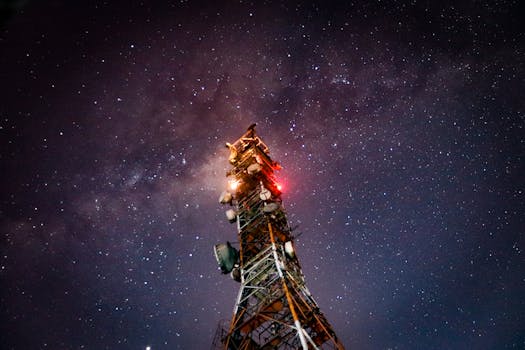
MEO Satellites: Revolutionizing Global Communication with Medium Earth Orbit Technology
Medium Earth Orbit (MEO) satellites are a type of satellite that orbits the Earth at an altitude of approximately 2,000 to 36,000 kilometers, which is lower than Geostationary Orbit (GEO) satellites but higher than Low Earth Orbit (LEO) satellites. MEO satellites are designed to provide a range of services, including communication, navigation, and Earth observation, and are becoming increasingly popular due to their unique advantages.
The use of MEO satellites is revolutionizing the way we communicate globally, offering faster and more reliable connections than traditional GEO satellites. MEO satellites have a lower latency than GEO satellites, which means that they can provide real-time communication services, making them ideal for applications such as video conferencing, online gaming, and remote healthcare. Additionally, MEO satellites have a wider coverage area than LEO satellites, making them suitable for providing broadband services to remote and underserved communities.
One of the key benefits of MEO satellites is their ability to provide high-speed connectivity to areas where traditional fiber-optic cables are not available. This makes them an attractive option for providing internet access to remote and rural areas, as well as for supporting emergency response and disaster relief efforts. MEO satellites can also be used to provide backup connectivity in case of fiber-optic cable outages, ensuring that critical communication services remain available.
How MEO Satellites Work
MEO satellites work by transmitting and receiving signals to and from Earth stations, which are typically located on the ground. The satellites use a range of frequencies, including Ka-band, Ku-band, and C-band, to provide a range of services, including broadband, television broadcasting, and mobile communications. MEO satellites are typically equipped with a range of antennas and transponders, which allow them to receive and transmit signals to multiple Earth stations simultaneously.
Applications of MEO Satellites
MEO satellites have a range of applications, including:
Providing broadband services to remote and underserved communities
Supporting emergency response and disaster relief efforts
Providing backup connectivity in case of fiber-optic cable outages
Enabling real-time communication services, such as video conferencing and online gaming
Supporting remote healthcare and telemedicine applications
Challenges and Limitations of MEO Satellites
While MEO satellites offer a range of benefits, they also have some challenges and limitations. One of the main challenges is the high cost of launching and operating MEO satellites, which can make them less competitive than other types of satellites. Additionally, MEO satellites are subject to interference from other satellites and Earth stations, which can affect their performance and availability.
Conclusion
In conclusion, MEO satellites are a type of satellite that offers a range of benefits, including faster and more reliable connections than traditional GEO satellites. They have a range of applications, including providing broadband services to remote and underserved communities, supporting emergency response and disaster relief efforts, and enabling real-time communication services. While they have some challenges and limitations, MEO satellites are becoming increasingly popular and are likely to play a major role in the future of global communication.
Future of MEO Satellites
The future of MEO satellites looks promising, with a range of new technologies and innovations being developed to improve their performance and capabilities. One of the key trends is the development of new propulsion systems, which will allow MEO satellites to maneuver and change orbit more efficiently. Additionally, there is a growing interest in using MEO satellites for Earth observation and remote sensing applications, which will provide valuable insights into our planet and its resources.
Real-World Examples of MEO Satellites
There are several real-world examples of MEO satellites, including the O3b satellite constellation, which provides broadband services to remote and underserved communities. Another example is the Iriss satellite system, which provides navigation and communication services to the European Union. These examples demonstrate the potential of MEO satellites to provide a range of services and benefits, and highlight the importance of continued investment and innovation in this field.






